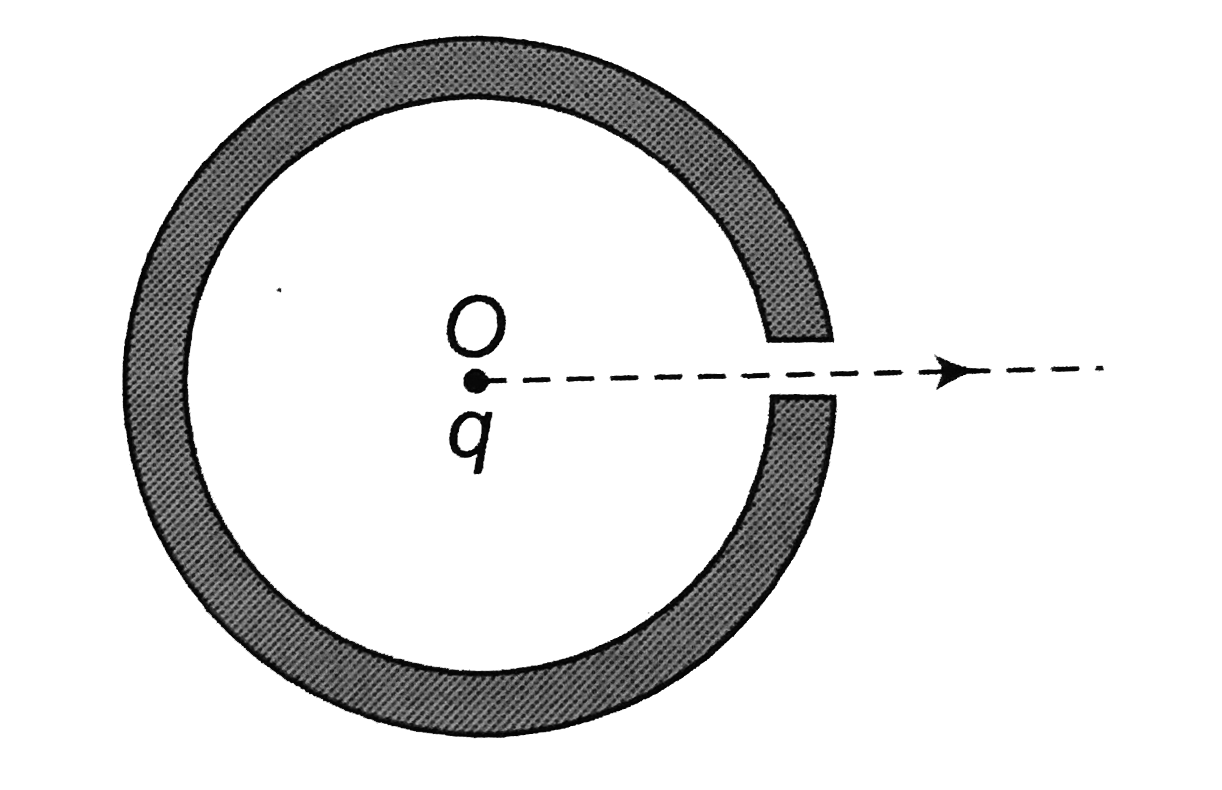Problems Based On Mixed Concepts from A2Z PHYSICS Chapter 6 ELECTRIC POTENTIAL & CAPACITANCE for Class 12
| Class 12 | PHYSICS |
| Chapter | ELECTRIC POTENTIAL & CAPACITANCE |
| A2Z PHYSICS | Problems Based On Mixed Concepts |
| Medium | English |
| Academic Year | 2023-2024 |
Question 1
A charged particle of charge 'Q' is held fixed and another charged particle of mass 'm' and charge 'q' (of the same sign) is released from a distance 'r'. The impulse of the force exerted by the external agent on the fixed charge by the time distance between 'Q' and 'q' becomes 2r is View SolutionQuestion 8
You are moving a negative charge q<0 at a small constant speed away from a uniformly charged non-conducting spherical shell on which resides a negative charge Q<0. The electrostatic, field of Q is E. Let U be the total energy of the system, Wa the work done by the force Fa you exert on q,WE the work done by the electrostaitc force FE on q. Then, as q is being moved :View SolutionQuestion 20
Two particles of charge q1 and q2 are separated by distance d as shown in figure. Chrage q1 is situarted at the origin. The net electirc field due to the particles is zero at x=d/4. With V=0 at infinity, the location of a point in terms of d on the x axis (other at infinfity) at which the elctrical potential due to the two particles is zero, is given by:
 View Solution
View SolutionQuestion 23
The curve represents the distribution of potential along the staight line joining the two charges Q1andQ2 (separated by a distance r) then which of the following statements are correct?

1. |Q1|>|Q2|
2. Q1 is positive in nature
3. A and B are equilibrium points
4. C is a point of unstabkle equilibriumView SolutionQuestion 28
For two points A and B in an electric field, if ΔW is work done in taking a test charge q' from A to B,ΔU=VB−VA is charge in potential energy of a rest charge when it is moved from A to B.

ΔV=VB−VA is charge in potential due to field if we move along path AB from A to B and ds is differential displacement along path AB.
Then, which of the following options is correct ?View SolutionQuestion 35
A point charge q is located at the centre O of a spherical uncharged coducting layer provided with small orifice. The inside and outside radii of the layer are equal to a and b respectively. The amount of work that has to be performed to slowly transfer the charge q from teh point O through the orifice and into infinity is
 View Solution
View SolutionQuestion 37
An electric dipole of dipole moment →p is oriented parallel to a unifrom electric field →E, as shown

It is rotated to one of four orientations shown below. Rank the final orientations according to the change in the potential energy of the dipole-field system, most negative to most positive.
 View Solution
View Solution
All Exercises from A2Z PHYSICS Class 12 PHYSICS ELECTRIC POTENTIAL & CAPACITANCE
- AIIMS Questions
- AIPMTNEET Questions
- Assertion Reason
- Capacitor
- Capacitor Circuits
- Capacitor With Dielectric
- Electric Potential
- Electric Potential Energy
- Euipotentials
- Grouping Of Capacitors
- Problems Based On Mixed Concepts
- Relation Between Electric Field And Potential
- Section B - Assertion Reasoning
- Section D - Chapter End Test














